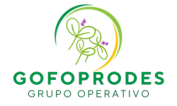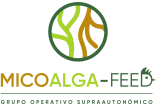
CELEGAND Operational Group: New cereals and legumes for Andalusian livestock farming
- Type Operational group
- Status In progress
- Execution 2021 -2023
- Assigned Budget 272.024,00 €
- Scope Autonómico
- Autonomous community Andalucía
- Main source of financing CAP 2023-2027
- Project website GO CELEGAND
The Operational Group was created to address the challenges of efficiently obtaining high-quality animal feed in sufficient quantities in Andalusia, given the unique climate of this autonomous community and the shortage of raw materials.
The project aims to obtain animal feed that enhances the nutritional value and safety of animal-based foods for human consumption. They will work together to employ tools based on techniques capable of improving yields in the primary sector. Thus, the use of technological solutions is essential to achieve a sustainable agrosystem: one that provides maximum efficiency in the use of natural resources (soil, water, energy, etc.), detects pests and diseases, controls food safety risks, and guarantees the necessary yields to ensure production profitability. One of Celegand's objectives will be to determine which cereal and legume varieties are most suitable for producing homogeneous batches of silage, hay, and animal feed.
These will assess nutritional quality parameters and their adaptation to climate change and the local climate. The task force will seek new production methods for healthy nutrition for dairy cattle (represented by Covap) and goats (which Los Remedios-Picasat will focus on) by modeling different crops and pursuing greater efficiency, plant health, and improved food safety.
The project proposes the need to use new productive varieties of wheat, triticale, chickpeas, peas, and broad beans, capable of mitigating the effects of climate change due to their lower water demands and greater resistance to pests and diseases. At the same time, they must have optimal nutritional quality and digestibility for livestock feed. In fact, the proposed new varieties boast superior nutritional characteristics to traditional crops and a high level of resistance to most common pathogenic fungi that infect conventional cereals.
Thus, its development will enhance and promote new commercial varieties of the main cereal and legume crops, both for forage crops and for the production of compound feed for animal feed, offering advantages in terms of nutrition, animal welfare, and improved organoleptic properties of milk and meat from cattle and goats. In this way, the breeding material generated will impact not only the agricultural sector in Andalusia, but also the rest of Spain, at various levels. Economically, it will help reduce ruminant feed costs and reduce the heavy dependence on imported feed.
The reduced need to resort to foreign production will not only benefit Spain's trade balance, but will also ensure supply in times of geopolitical tension, as has occurred this season following the outbreak of the war in Ukraine, the main supplier of raw materials for animal feed. In the environmental area, distances between fields and consumption points will be reduced, allowing for sufficient crop, production, and feed areas in areas close to livestock farms, and which would cooperate with production systems in reducing emissions caused by the carbon footprint. Furthermore, crop rotation with nitrogen-fixing legumes is being implemented to protect the soil and reduce fertilizer use.
In the technological area, the project proposes the use of new digital tools, specifically a platform based on IoT (Internet of Things) technology. It incorporates two types of smart nodes: one for continuous monitoring of environmental variables (relative humidity, soil humidity, temperature, etc.) and the other equipped with cameras and artificial vision. The goal is to improve crop monitoring in two ways.
Thus, on the one hand, the platform will allow for continuous monitoring of its development and facilitate the analysis of the suitability of different varieties. On the other, it will enable more efficient production management by detecting problems and minimizing the use of fertilizers and phytosanitary products.
The animal feed sector is of primary importance to the Spanish food system as a means of livestock production and food security. This sector is part of the first link in the production and marketing chain and is considered key to the viability of livestock farms. From an economic perspective, feeding food-producing animals constitutes the main production cost for livestock farms, and at least 15-20% of this cost is generated by the consumption of harvested raw materials. For this reason, great efforts have been made to understand the nutritional needs of animals and to develop feed rations that optimize the production of livestock species.
In the raw materials industry, the supply of both cereals and legumes is important, being closely linked to livestock production, not only as a destination for their products but also as a direct player in livestock development, one of the agricultural subsectors in which Spain has proven most competitive. Thus, the animal feed industry is one of the linchpins of the livestock complex.
In recent years, wheat, oats, triticale, and barley have been the cereals cultivated in the largest area and production in the Andalusian region, both for animal and human feed. Legumes, on the other hand, are a fundamental component of diets, feed, and feed mixes intended for animal feed. Their impact on prices is very high, and feed manufacturers require a continuous and guaranteed supply to meet livestock feeding needs.
Competitiveness in the animal feed market will be determined by factors such as the quality of the purchased feed, the continuity of supply, the guarantee of mycotoxin-free production, and logistics costs. Given the importance of the main cereal and legume crops in the Andalusian region, the aim is to seek new production methods for healthy livestock nutrition by modeling different crops, seeking greater efficiency, plant health, and the resulting improvement in feed quality.
Likewise, efforts must be made to address the challenge of reducing environmental impact by utilizing more nutritionally efficient cultivation methods, with less input use and more appropriate water and energy expenditure. Furthermore, compared to major cereals, the forage crop seed market is very complex to analyze, primarily because this category encompasses a wide variety of crops, with significant fluctuations depending on the growing area. However, considering the available data for analyzing the potential market, the forage seed market is a market of significant volume and value.
Global seed production, including the most important crops, has averaged over 1.1 billion tons annually in recent years. In Spain, however, the distribution of forage crops is different, with alfalfa being the main crop used for silage, followed by legumes and some grasses such as oats, and finally barley and corn.
The activities to be developed will include: the use of new varieties of wheat, triticale, chickpeas, peas, and broad beans with improved nutritional characteristics and greater resistance to most common fungal pathogens that infect conventional cereals. The development of a new platform based on IoT (Internet of Things) technology for continuous monitoring of crop development.
To this end, preliminary studies will be conducted for the agronomic management of the crop, divided into a documentary phase and a field phase. Additionally, studies and management of the new crops will be conducted to obtain forage, grain, and hay for animal feed.
Continuous monitoring and rapid crop diagnosis methodologies will also be developed, along with evaluation and comparison of results, and, finally, the communication and dissemination of the results obtained.
The overall objective of this project is to determine which cereal and legume varieties are most suitable for producing homogeneous batches of silage, hay, and animal feed, based on nutritional quality parameters and their adaptation to climate change and the climate of Andalusia. This overall objective will be addressed through a series of sub-objectives:
Objective 1: Develop new, more efficient and sustainable varieties of cereals and legumes
Objective 2: Improved crop agronomic efficiency and production of safer and more digestible forages/legumes and livestock feed.
Objective 3: Evaluation of results against CAP guidelines and transfer to the agricultural sector and the scientific community. Expected impact of the project: Improving the production of new agricultural plant varieties is an activity of utmost importance to Andalusia from an economic, social, and environmental perspective. Thus, in the economic sphere, the project will enable the development of new, more efficient, marketable plant varieties. In the social sphere, it will allow agricultural and livestock activities to adapt to the challenges associated with market demands and climate change, thereby boosting the sustainability of both sectors over time. In the environmental sphere, it should also be noted that the Celegand Operational Group's activities will be centered in southern Spain, one of the areas most vulnerable to climate change.
Since the project will be working with plant varieties capable of adapting to the climatic conditions of this area, end users—farmers and ranchers—will be given tools to mitigate the effects of climate fluctuations on agriculture. Therefore, the project's relevance will primarily impact:
- Determine which varieties of wheat, triticale, chickpea, pea, and bean are most suitable for producing homogeneous batches of silage, hay, and feed for animal feed.
- Use new, more efficient and sustainable varieties of cereal and legume crops for livestock feed, capable of mitigating the effects of climate change.
- Help reduce feed costs for ruminants on livestock farms.
- Reducing the current heavy dependence on imported feed, which will impact Spain's trade balance.
- Coordinator/entity name: Agri-Food Research and Quality Center of the Pedroches Valley (CICAP)
- Postal address: Dehesa Boyal Industrial Estate, 8, Plots 10-13. 14400, Pozoblanco, Córdoba
- Coordinator/entity email: bpazuelo@cicap.es
- Telephone: 957 116 254
- Centro de Investigación y Calidad Agroalimentaria del Valle de los Pedroches (CICAP)
- AGROVEGETAL (isolis@agrovegetal.es)
- COVAP (Cooperativa ganadera del valle de los Pedroches) (jrisquezs@covap.es)
- Nuestra Señora de los Remedios-Picasat (tecnico@remediospicasat.com)
- Universidad Loyola Andalucía (pmillan@uloyola.es)
- Cooperativas Agro-alimentarias de Andalucía (cdiaz@agroalimentarias-andalucia.coop
- IFAPA (anam.torres.romero@juntadeandalucia.es)
- IFAPA (anam.torres.romero@juntadeandalucia.es)
- Centro de Investigación y Calidad Agroalimentaria del Valle de los Pedroches (CICAP)







